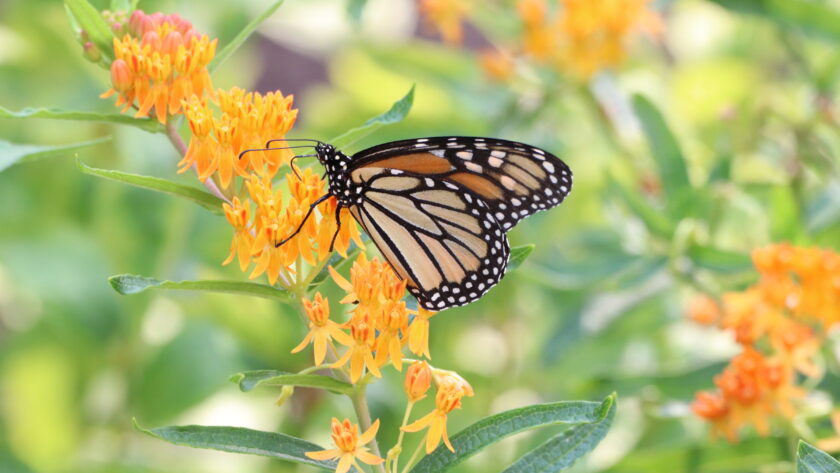The sounds coming from the yard are tweets and chirps of baby birds. And splashing from the bird baths. In this constant heat, with little rain, it has practically become a two-time per day job just to keep the baths full. I don’t mind.

There have been plenty of threats of thunderstorms, yet every time the radar turns from green to bright red, the storms dissipate right over our town and we have been hit with very little rain this summer*. So the bird fountain, and bird rock bath are often frequented. Sometimes even by a bird I can’t quite get a full ID on. Like the one above, a plain brown sparrow with the most dynamic cinnamon tail. Yet it lacks the brown breast spot that would easily deem in a Song Sparrow. With that floof it could be a young bird making it more difficult to ID, but with a little sprout of hope, I want to say it is a Swamp Sparrow, a first to our place. But probably not. That is a fairly rare bird to catch a glimpse.
For a time the only birds out and and about in the garden were the Brown-headed Cowbirds with no babies to raise because they enlist other birds to rear and raise their young. All the other birds were busy catching insects and raising broods tucked hidden away, unseen from predators. Soon the hierarchy of dominance around the seed feeders starts to take shape once the fledglings are off on their own, at about the end of June. The Blue Jays and the Tufted Titmice in a constant face-off with the Red-bellied Woodpecker. The Mourning Doves mulling about on the ground, and the “safety in numbers” House Finches darting in around. The occasional Red-Winged Blackbird and the bright yellow, yet shy American Goldfinch round out the colorful array. While not a seed eater, we also have plenty of Eastern Bluebirds because they LOVE the water! And the Gray Catbirds…they splash in fresh water constantly!
The fireflies are out in abundant numbers and we have delighted in seeing them appear in more and more quantity since late May. The Eastern Wood Pewee is now the last to sing at night (sometimes going well past 9pm in our woods) and the monarchs seem to be (hopefully) trickling in slowly. I have only seen three so far this summer. Though my husband tries to reassure me that their reign comes more in August. Let’s hope that’s true.

The Ruby-throated Hummingbirds are one of few birds that don’t disappear into the trees when it actually storms. They seem to appreciate the rain and dance around the raindrops in glee. Or simply sit perched with rain falling around them. While I would love to see a hummingbird use our bird bath, they don’t have the ability to stand on the rocks and splash around like the other song birds do. They can perch on a branch, but their legs are so small, they are not designed for standing, or for walking. However, once I heard from my brother that his hummingbirds danced around (to the point of being comical) in the spray of his garden hose while he was spraying down his garden. That got us thinking, why not install a hose with misting nozzles just for these diminutive birds. So we did! We can’t leave it on all the time, but during the mid-day, the birds do seem to enjoy the small mist. If you look closely in the photo above, those bits of white in the photo are actually tiny droplets from the misting spray, not pollen. We have a coral honeysuckle vine (Lonicera sempervirens) growing along our deck rail, and so we intertwined the misting hose around the railing. On the hottest of afternoons, the deck becomes a hummingbird paradise.
For a bird that is so dainty and apparently sweet on the outside, they are surprisingly aggressive at defending their territory. All out wars are seen as the male Ruby-throat wants no part of a female drinking from his nectar. How do they ever get along enough to raise the next heir?
*As of this evening, once such storm actually did stall enough and stay on the radar as indicated…the sound of falling rain again the roof and windows of the house this 4th of July is a welcome sound. One I have not heard in a pretty long time.

